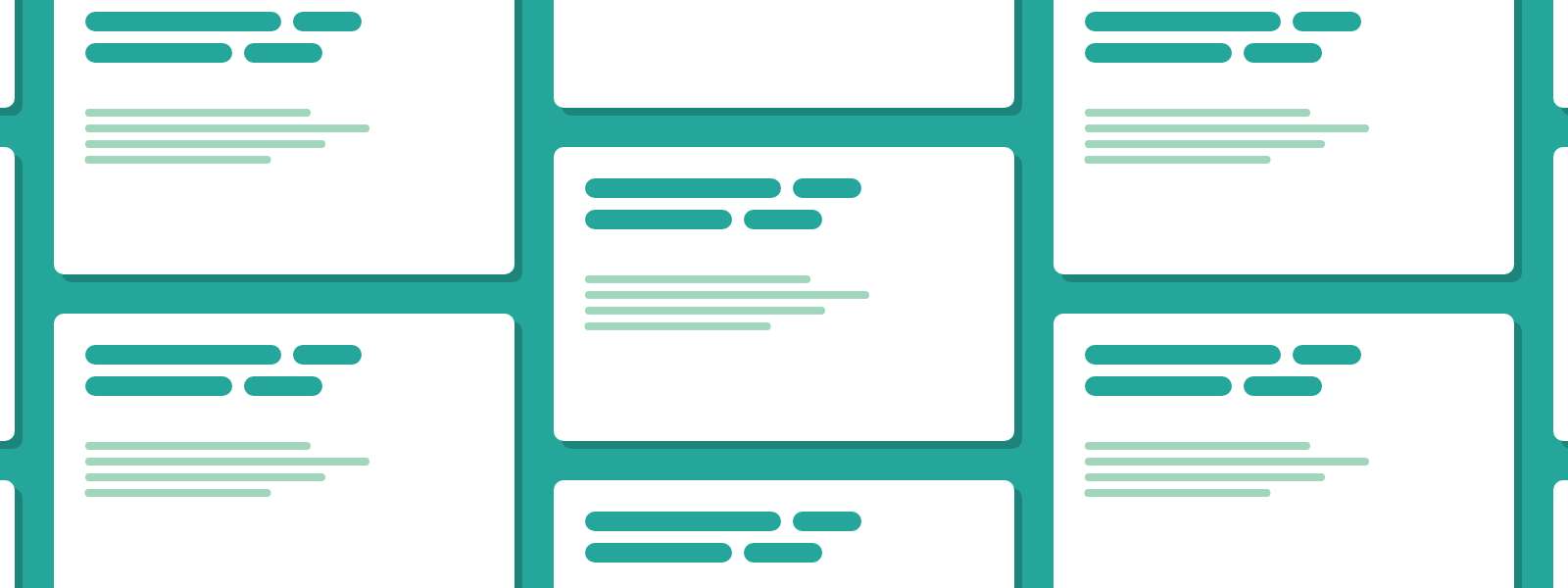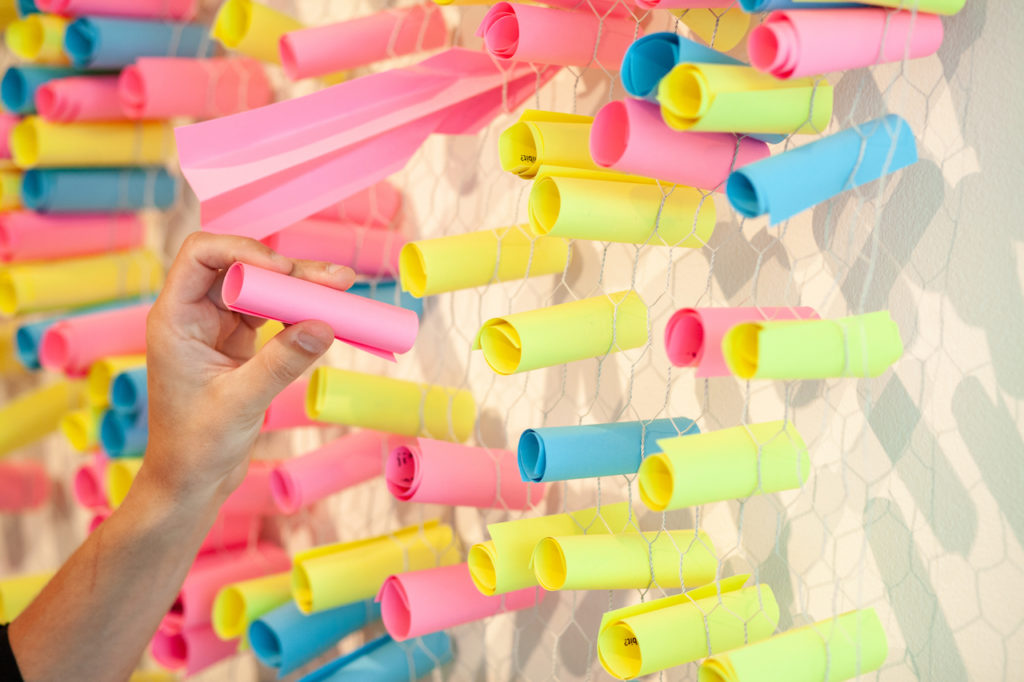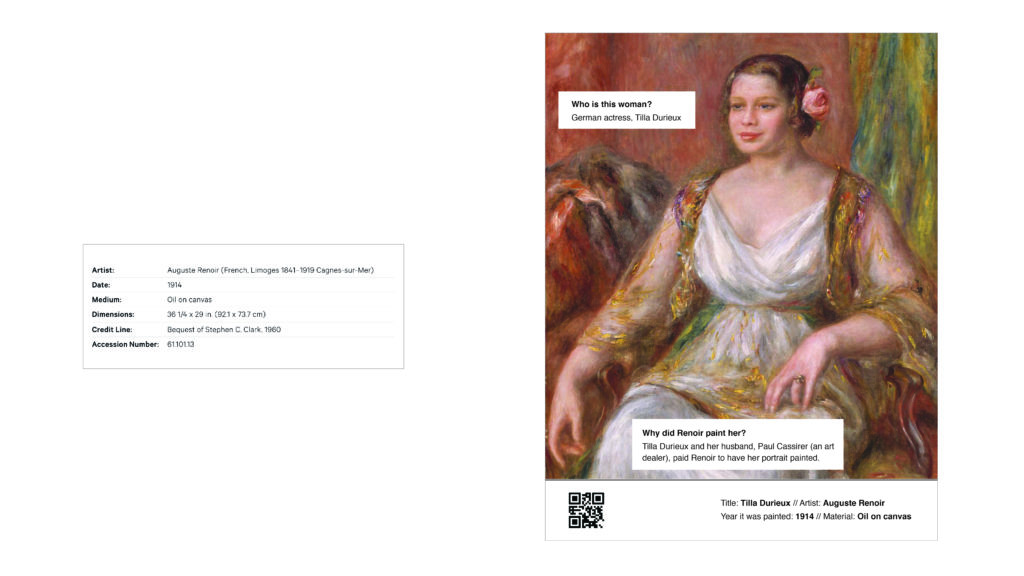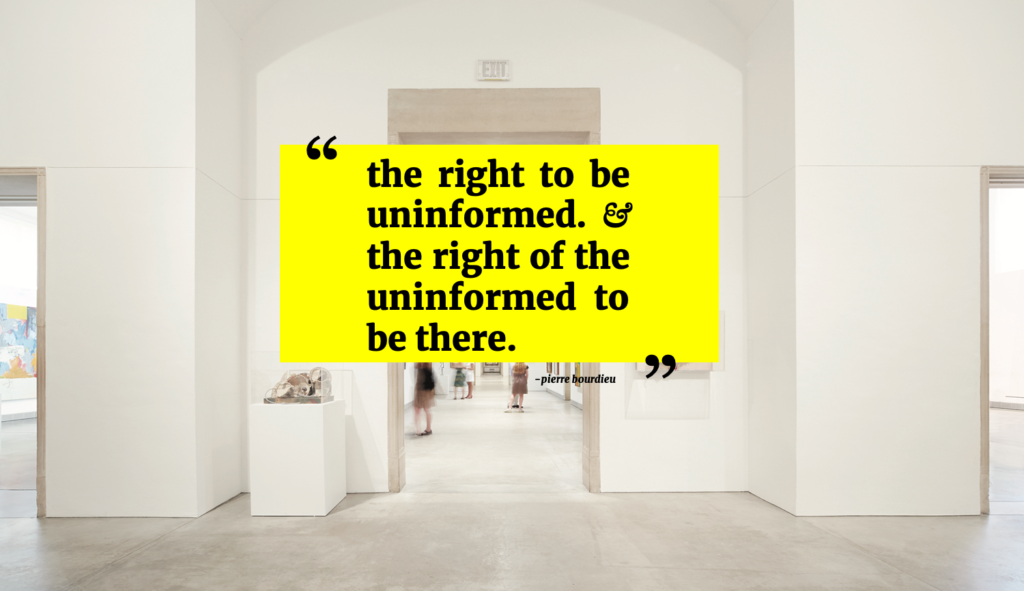
6 Principles for Redesigning Museum Interpretation
Lauren Smedley is a Digital Producer at CultureConnect and a recent MFA graduate from the University of Texas at Austin. Her thesis work, Six Principles for Redesigning Museum Interpretation unpacks the problems with traditional wall labels and content panels – backed by loads of data – and explores how digital interventions can help museums create accessible forms of interpretation.
So, why rethink museum interpretation?
Many museum visitors rely upon content panels or wall labels to make meaning of what they are looking at, but these labels do not always provide sufficient context for visitors. This can cause confusion or lack of interest, especially for visitors without much prior exposure to art, history, or science.
Digital projects at CultureConnect have museum interpretation and the visitor experience at its core. As a digital producer at CultureConnect, Lauren not only shares the six principles she developed in writing her thesis, but also talks through applications in a digital context.
THE SIX PRINCIPLES
1. COMMUNICATE IN DIFFERENT MEDIUMS AND FORMATS
The first step in creating accessible content, is providing museum visitors with a variety of options that can satisfy a visitor’s unique desire and comfort level for making meaning in a museum. Common approaches to this are audio guides or docent tours, but both require visitors to move at someone else’s pace and learning style.
Digital interactives allow visitors to explore stories at their own pace, according to their interests, and as a group or individual. Depending on the depth of the story, visitors have the ability to dig deeper through layers of content or receive a quick understanding at the surface. This assists both new and experienced learners.
Using a digital device as opposed to a printed wall label also assists a more diverse museum audience. It’s easier to switch between language options, increase text size, as well as include audio and media components.

Museum visitor quote referenced in Museum Visitors’ Self-Efficacy and Interest in Contemporary Art, 2015 thesis report by Lauren Holley.
2. COMMUNICATE ACCESSIBILITY AFFORDANCES BEFORE THE VISITOR ENTERS THE BUILDING
In order for a visitor to feel confident in making meaning from an exhibit, they must feel confident that they are welcome in a space. Affordances should always be made clear both before and during their visit. For example, the museum’s website should have an easy to find, dedicated page on accessibility. Every staff member who may need to answer emails or phone calls about the museum’s accessibility should be fully informed and/or be able to easily and quickly respond with needed information. For example, where visitors can park, how best to enter the building, how to navigate the museum, and how to connect with staff members onsite.
During the visit, signage and onsite staff should both effectively communicate accessibility affordances and align with what’s on the museum website. Media or digital interactives are also great opportunities for enhancing the museum experience for all visitors in a way that traditional wall labels or text may not.
3. COMMUNICATE THE CREATOR’S POINT OF VIEW. IF IT’S NOT POSSIBLE, EXPLAIN WHY.
When a group of regular and non-regular museum goers were asked what they wanted to know about a work of art, one of the most common responses was “Why did the artist make this?” In fact, data collected in a 2015 survey found 76% of respondents wanted to hear the artist point of view, 74% wanted to know the art’s background/context, and 59% wanted to know how the artwork was made. A majority of people want to understand what they’re viewing from the perspective of the artist. In doing so, visitors are able to form opinions about the art and the artist for themselves.
Wall labels aren’t always conducive to capturing the voice of the artist due to size or printing limitations, however, with a digital interactive or mobile app a visitor is able to watch interviews with the artist, flip through photos of the artist’s studio, or listen to the artist’s voice while viewing the art. Digital may even provide the opportunity for dialog reaching a wider audience than who may be able to attend an event. Even in CultureConnect’s own research, we’ve found that visitors respond best to ‘point of view’ in interpretation.
4. CREATE TWO-WAY COMMUNICATION WITH VISITORS.
Research also revealed that visitors should be able to provide feedback in different mediums and formats. Additionally, the museum should offer meaningful feedback prompts. The visitor’s voice being heard by the museum is an important aspect to keeping museums in check as well as encouraging inclusivity, community, and dialogue. Printed wall labels and static content panels are one-sided forms of communication, which don’t allow for a visitor to ask questions or interact.
Digital interactives offer one way to address this need. From surveys, to ‘reaction’ modules embedded in kiosk or mobile experiences, to discussion modules such as commenting or texting, museums can form this dialogue.

5. CREATE A PLAN FOR IMPLEMENTING VISITOR FEEDBACK.
It’s one thing to put up a survey or a suggestion box at the end of the experience or even embed feedback modules in digital experiences, but it’s an entirely different thing to do something about it. Museums must set aside funding and time to create and monitor these feedback loops, and be willing to act on the feedback they receive.
6. THE SOLUTION NEEDS TO BE AFFORDABLE.
Not all museums have the power to sustain a tech-heavy solution, so it’s important that the solutions generated for widely accessible interpretation are available to all different types and sizes of museums. Working within what museums already do, consider redesigning wall labels (see below). If we know the questions visitors want answered, why not craft labels that speak directly to those questions?
Digital provides many opportunities for addressing these principles but can often become unwieldy or expensive. For smaller institutions or those newly developing a digital strategy, seek out simple, easy to maintain technology solutions to start or focus on proven technology (e.g. audio guides) rather than experimental technology.
While CultureConnect offers some solutions for small museums, check out our recent interview with NEW INC, the first museum-led incubator with a Museum Technology Track focused on developing affordable off-the-shelf technology solutions for museums.
FINAL THOUGHTS: THE MUSEUM LABEL REDESIGNED
After completing her thesis research, Lauren prototyped a redesigned wall label incorporating some of the insights gained from visitors. The image below shows a version of a standard wall label on the left and the redesigned wall label on the right.

The traditional wall label on the left shows the basic information typically found on a wall label. In fact, this version goes farther than most in that it labels the information fields.
The redesigned concept on the right gives abbreviated tombstone information on the bottom right and a small QR code on the left to learn more or bookmark the artwork. The QR code is an option for those who are interested in engaging that way.
The artwork is reproduced because often visitors take photos of the label so they can go home and look it up, however, it can be difficult to get the label detail in a photo as well as the artwork for visual reference. The call out boxes are simple Q&A that reveal content based on what visitors tend to be most curious about when asked about a piece of art and delivered in an easy to digest bite, rather than paragraph format.
Have ideas for your own wall label redesign? Ping us at hello@cultureconnectme.com
ABOUT LAUREN SMEDLEY
Lauren is a Digital Producer at CultureConnect and MFA graduate from the University of Texas at Austin. Before joining CultureConnect, Lauren worked as part of the design team at The Franklin Institute, Design Institute for Health, and Level Design Group. Want to read Lauren’s thesis or discuss visitor experience in more depth? Reach out to lauren@cultureconnectme.com.
